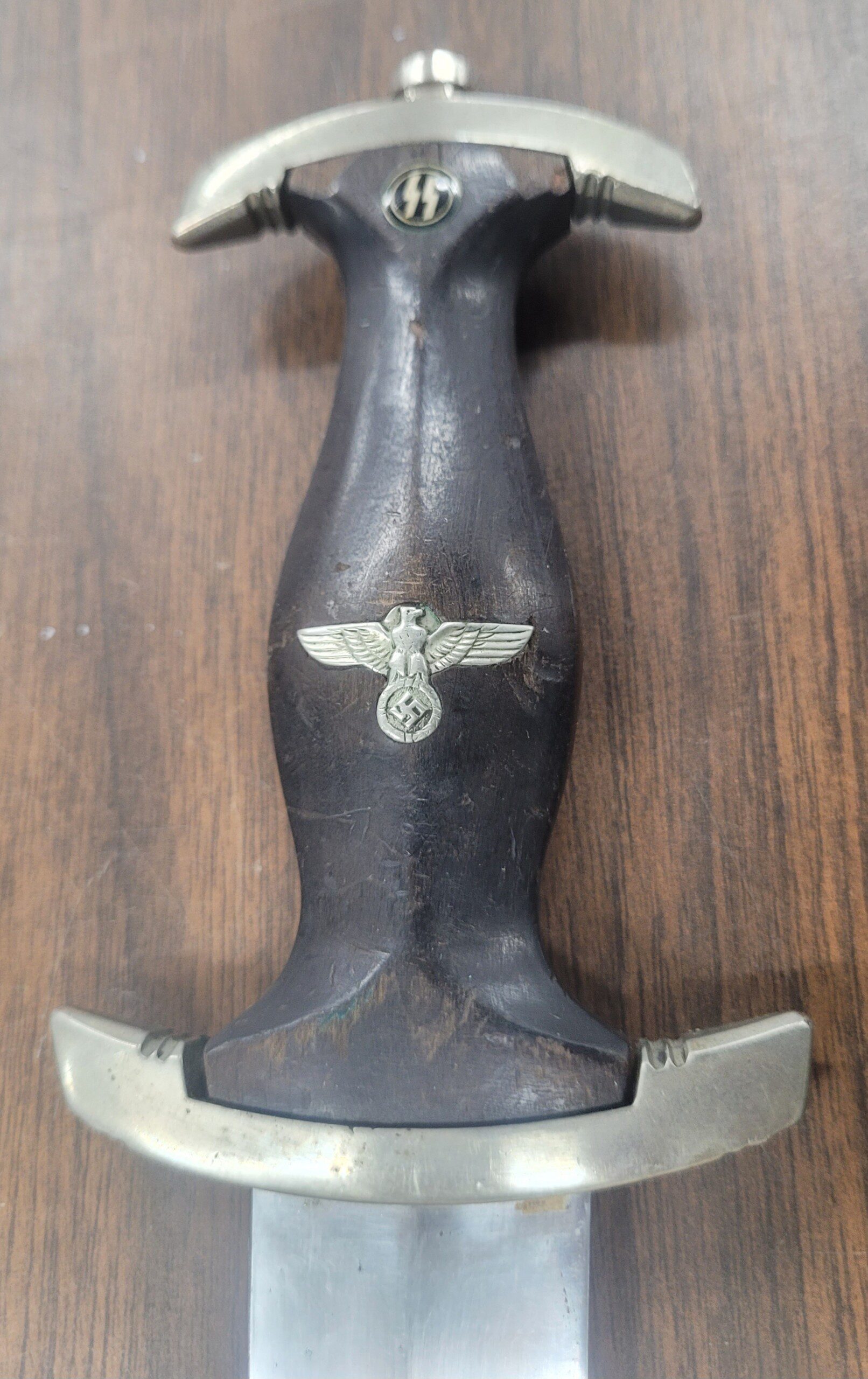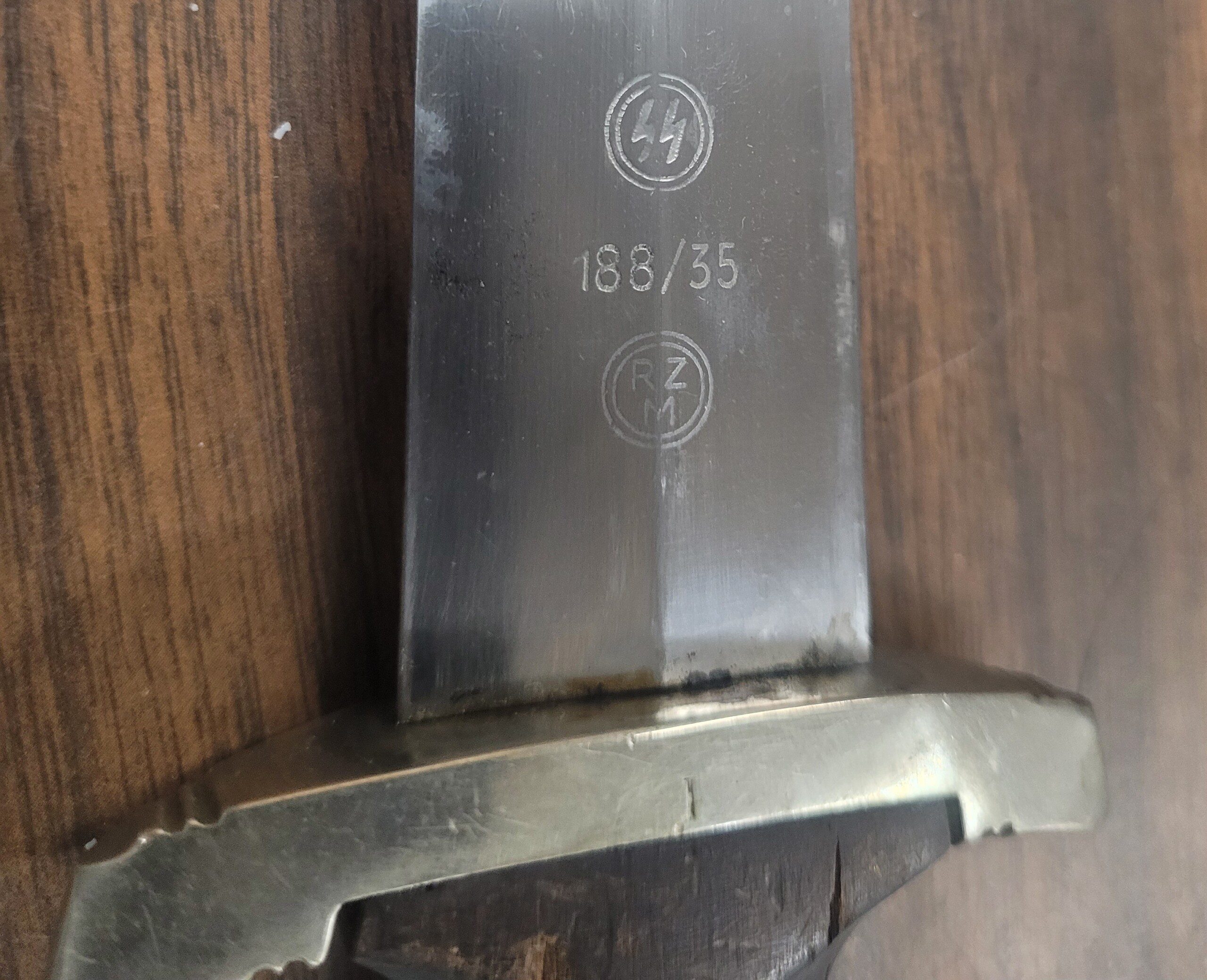Description
A true trophy of war as brought back by a local US GI from Germany in WWII, this dagger once belonged to a member of the dreaded SS troops of Adolph Hitler. It shows honest use and field wear as shown but retains all original parts and finish. The blade engraving is crisp and clear. It is maker marked by the distribution section, RZM, and has SS runes on the blade as well. These daggers were not only prized by members of the elite SS.
Receiving an SS dagger was a REALLY big deal. All members of the SS from enlisted men through to the highest rank were authorized to carry an SS dagger upon completion of necessary requirements. Candidates were not just handed a dagger. There was a very ritualistic torchlight ceremony in front of the hallowed Nazi shine in front of the Feldhernhalle in Munich on Nov. 9 every year. This emotionally charged ritual took candidates back to their Tetonic roots in the Middle Ages. Candidates pledged their oath to Adolf Hitler and only then were they able to wear an SS dagger. The daggers inscription was meant to be a constant reminder of their oath unto death.
The Schutzstaffel (German ’Protection Squadron’; SS; also stylised with SS runes as ᛋᛋ) was a major paramilitary organisation under Adolf Hitler and the Nazi Party in Nazi Germany, and later throughout German-occupied Europe during World War II.
It began with a small guard unit known as the Saal-Schutz (“Hall Security”) made up of party volunteers to provide security for party meetings in Munich. In 1925, Heinrich Himmler joined the unit, which had by then been reformed and given its final name. Under his direction (1929–1945) it grew from a small paramilitary formation during the Weimar Republic to one of the most powerful organizations in Nazi Germany. From the time of the Nazi Party’s rise to power until the regime’s collapse in 1945, the SS was the foremost agency of security, mass surveillance, and state terrorism within Germany and German-occupied Europe.
The two main constituent groups were the Allgemeine SS (General SS) and Waffen-SS (Armed SS). The Allgemeine SS was responsible for enforcing the racial policy of Nazi Germany and general policing, whereas the Waffen-SS consisted of the combat units of the SS, with a sworn allegiance to Hitler. A third component of the SS, the SS-Totenkopfverbände (SS-TV; “Death’s Head Units”), ran the concentration camps and extermination camps. Additional subdivisions of the SS included the Gestapo and the Sicherheitsdienst (SD) organisations. They were tasked with the detection of actual or potential enemies of the Nazi state, the neutralisation of any opposition, policing the German people for their commitment to Nazi ideology, and providing domestic and foreign intelligence.
The SS was the organization most responsible for the genocidal murder of an estimated 5.5 to 6 million Jews and millions of other victims during the Holocaust. Members of all of its branches committed war crimes and crimes against humanity during World War II (1939–1945). The SS was also involved in commercial enterprises and exploited concentration camp inmates as slave labor.
After Nazi Germany’s defeat, the SS and the Nazi Party were judged by the International Military Tribunal at Nuremberg to be criminal organizations. Ernst Kaltenbrunner, the highest-ranking surviving SS main department chief, was found guilty of crimes against humanity at the Nuremberg trials and hanged in 1946.







